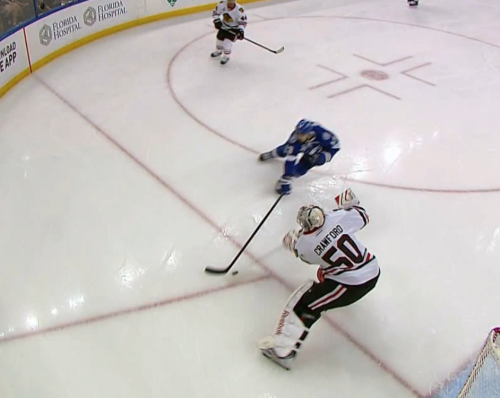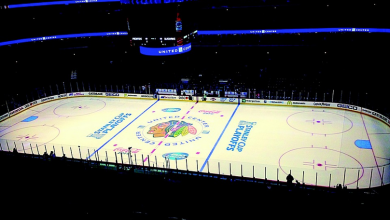Four Rule Changes The NHL Should Consider

The winds of change were blowing when the NHL’s GMs met earlier this summer.
At the urging of Detroit Red Wings General Manager Ken Holland and other like-minded GMs – who have been lobbying the league for years to reduce the amount of shootouts per season – the NHL adopted a new 3-on-3 overtime format in favour of the existing 4-on-4 format.
The league also addressed the issue of blatant missed calls by voting to implement a coach’s challenge for the upcoming season. And while these changes do address some of the league’s flaws, there are still some other changes to the rulebook the league could make that would improve the game for both the players and the fans.
Remove the trapezoid: Aside from reminding us what shapes we were taught in elementary school the trapezoid has served no real purpose. If anything it has done more harm than good by removing considerable creativity and mobility from the goaltending position. Gone are the days when puck handlers such as Martin Brodeur and Patrick Roy were so common the skill was almost overlooked. Now a goalie such as Carey Price of the Montreal Canadiens – who is perhaps average by old standards – is heavily praised for his composure and work with the puck. In addition to creating more dynamic goalies, removing the trapezoid would prevent defensemen from constantly having to retrieve the puck in the corners, allowing the play to move up ice and develop much quicker. It would also be a safety mechanism for players who are thrust into vulnerable positions on dump-ins and potential icings by allowing goalies to leave the net and act as a backup of sorts.
Enforce the instigator: Did you even know the NHL had the instigator penalty? If not, no one could blame you, given how selective referees are in administrating the punishment. If the NHL wants to eliminate staged fights or fights that serve almost no purpose – something it seems to be trending toward – handing out instigator penalties would be a good place to start. In addition to receiving a five-minute major penalty, the instigator in any fight also receives a two-minute minor and 10-minute misconduct. Such punishment will force the realization – either by players who don’t want to sit for nearly a full period, or by teams that are constantly burned shorthanded – that a fight needs to have a purpose, not just be a show.
Adjust icing (yes, again): Hybrid icing was brought in to prevent injuries like the one former Minnesota Wild defenceman Kurtis Foster suffered in 2008 when he broke his femur on a violent collision with the end boards. Although no serious injuries have occurred since its inception two seasons ago, the rule hasn’t quite been a rousing success. Often times there is a lot of grey area in terms of what constitutes an icing, given the lack of a definitive line on the ice the linesmen can use to gauge icings, leading to anger and frustration. Rather than leaving the call to the linesmen’s discretion, painting a line (similar to the goal line) through the faceoff dots would be a better – albeit less aesthetically appealing – way to solve the hybrid icing problem. Of course, if all else fails there’s also the no-touch option.
No more puck-over-glass penalty: other than for its role inspiring a great song from TSN’s hockey crew, this penalty has been a total buzzkill. It’s only a matter of time before the outcome of an important game with playoff implications, or an actual playoff game, is affected by this mindless penalty, so the NHL should just do away with it before it faces the inevitable backlash. Often times the only reason the puck clears the glass is because it’s rolling or on an edge before a players makes contact with it, so it’s unfair to punish players for something that is largely out of their hands. Rather than calling a penalty, a better way to punish teams for allegedly trying to get a whistle by clearing the puck out of play would be to deny them the ability to change lines (similar to the icing rule).

